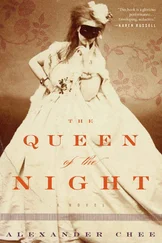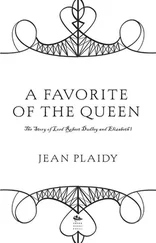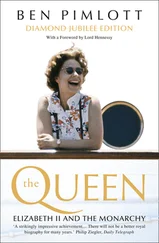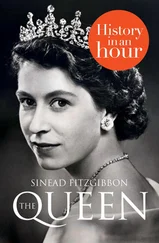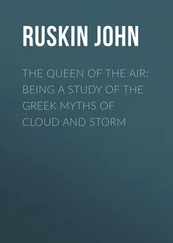The following night, the revels continued. “Out in crowd again,” Elizabeth recorded in her diary. “Embankment, Piccadilly, Pall Mall, walked simply miles. Saw parents on balcony at 12:30 am—ate, partied, bed 3am!” “It was a unique burst of personal freedom,” wrote Margaret Rhodes, “a Cinderella moment in reverse, in which they could pretend that they were ordinary and unknown.”
Three months later, the group ventured out again to mark the victory over Japan. Once more they “walked miles,” Elizabeth wrote. “Ran through Ritz … drank in Dorchester, saw parents twice, miles away, so many people.” This time Elizabeth was recognized and cheered, although police cautioned the revelers that “the princesses wished to be treated as private individuals, and they were allowed to go on their way.”
Elizabeth was barely nineteen years old at the war’s end. Despite her years behind the walls of Windsor, she had experienced life in ways she certainly would not have if she had passed through adolescence in the conventional style of a young member of the royal family. She had seen her parents in a heroic new light as the embodiments of duty and brave service, she had felt the losses of wartime deaths, and she had been exposed to people outside the royal orbit. She had taken on new responsibilities and had caught a glimpse of what the next stage of her life would likely be, not only her role as heiress presumptive, but even more profoundly her personal life—a secret she held tight with the discretion that would characterize her conduct in the decades ahead. She had entered the war as a little girl, and now she was a young woman.
“People thought ‘Aha!’
at that point.”

Princess Elizabeth and Philip exchange a telltale glance at the wedding of their cousin Lady Patricia Mountbatten, October 1946. © TopFoto/The Image Works
TWO

Love Match
“THERE WAS A WHOLE BATTALION OF LIVELY YOUNG MEN,” RECALLED Lady Anne Glenconner, whose parents, the Earl and Countess of Leicester, were friends and neighbors of King George VI and Queen Elizabeth at Sandringham in Norfolk. But Lilibet “realized her destiny and luckily set her heart on Prince Philip at an early age. He was ideal—good looking and a foreign prince.”
Her choice was in some respects traditional, because the princess and Philip were relatives, but not too close to raise eyebrows. They were third cousins, sharing the same great-great-grandparents, Queen Victoria and Prince Albert. Philip was in fact more royal than Elizabeth, whose mother was mere British nobility (with distant links to English and Scottish kings), while his parents were Princess Alice of Battenberg (a great-grandchild of Queen Victoria) and Prince Andrew of Greece, the descendant of a Danish prince recruited for the Greek throne in the mid-nineteenth century. Lilibet and Philip were both connected to most of Europe’s reigning families, where consanguinity had been common for centuries. Queen Victoria and her husband had been even closer: first cousins who shared the same grandmother, the Dowager Duchess of Coburg. Victoria’s mother (also Victoria) and Albert’s father, Ernest, were sister and brother.
In other ways, Philip was an outlier with a decidedly unconventional background. Queen Elizabeth had made no secret of her preference for one of her daughter’s aristocratic English friends from a family similar to the Strathmores—the future Dukes of Grafton, Rutland, and Buccleuch, or Henry Porchester, the future Earl of Carnarvon. Philip could boast none of their extensive landholdings, and in fact had very little money.
Although he was born on June 10, 1921, on the isle of Corfu, Philip spent scarcely a year in Greece before the entire royal family was expelled in a coup. His parents took him, along with his four older sisters, to Paris where they lived rent-free in a house owned by wealthy relatives. A proud professional soldier with an extroverted personality and quick wit, Prince Andrew found himself at loose ends, while Alice (properly known as Princess Andrew of Greece after her wedding) had difficulty managing a large family, not least because she was congenitally deaf. Still, during these early years Philip flourished in an overwhelmingly female household that showered attention on him. He attended the American school in St. Cloud, learned to speak fluent French, and developed an assertive personality.
But his childhood took a dysfunctional turn after his parents sent him at the age of eight to Cheam, a boarding school in England. A year later his mother had a nervous breakdown and was committed to a sanatorium for several years, which precipitated his parents’ permanent separation. She eventually moved to Athens and established a Greek Orthodox order of nuns, dedicating herself with religious fervor to carrying out good works.
Prince Andrew was mostly absent from his son’s life as well, living as a “boulevardier” in Monte Carlo with a mistress, and subsisting on a small annuity, while beneficent relatives and friends paid Philip’s school fees. Philip’s four sisters married prosperous German princes—several with connections to the Nazi Party—and welcomed their little brother on school holidays until Hitler’s intensifying belligerence made the visits impossible. Philip was also touched twice by tragedy while in his teens when his sister Cecile and her family were killed in a plane crash, and a year later his favorite uncle and guardian, George Mountbatten, the 2nd Marquess of Milford Haven, died of cancer.
Philip was consigned to an itinerant life as an exile, with neither home nor parents to sustain him. Asked years later about the rootlessness of his upbringing, he said, “The family broke up.… I just had to get on with it. You do. One does.” He left Cheam in 1933 to spend one year at Salem, a boarding school in Germany run by a progressive Jewish educator named Kurt Hahn. After the Nazis briefly detained Hahn, he fled in 1934 to the North Sea coast of Scotland and founded Gordonstoun School, where Philip soon enrolled.
Gordonstoun’s educational philosophy was rooted in leadership and service, and meeting tests of physical endurance (harsh drills, cold showers) in addition to academic work. Philip embraced the challenges and became the school’s head boy (known as the “Guardian”). “He was one of those boys who very early rendered disinterested service and who never asked for any privilege on account of his birth,” Hahn recalled. In his final report, Hahn wrote that Philip was a “born leader” who would “need the exacting demands of a great service to do justice to himself.” The headmaster saw “intelligence and spirit” as well as “recklessness,” and noted that Philip’s leadership qualities were “marred at times by impatience and intolerance.”
Once in the United Kingdom, Philip came under the wing of his relatives there, chiefly his Battenberg grandmother, the Dowager Marchioness of Milford Haven, who lived in a grace-and-favor apartment in Kensington Palace, and his mother’s younger brother, Louis “Dickie” Mountbatten, later the 1st Earl Mountbatten of Burma, who assiduously cultivated his royal relatives.
Six feet tall, with intense blue eyes, chiseled features, and blond hair, Philip was an Adonis as well as athletic and engaging, exuding confidence and a touch of impudence. He was a resourceful and energetic self-starter, yet he was also something of a loner, with a scratchy defensiveness that sprang from emotional deprivation. “Prince Philip is a more sensitive person than you would appreciate,” said his first cousin Patricia Mountbatten, Dickie’s older daughter. “He had a tough childhood, and his life constrained him into a hard exterior in order to survive.”
Читать дальше



